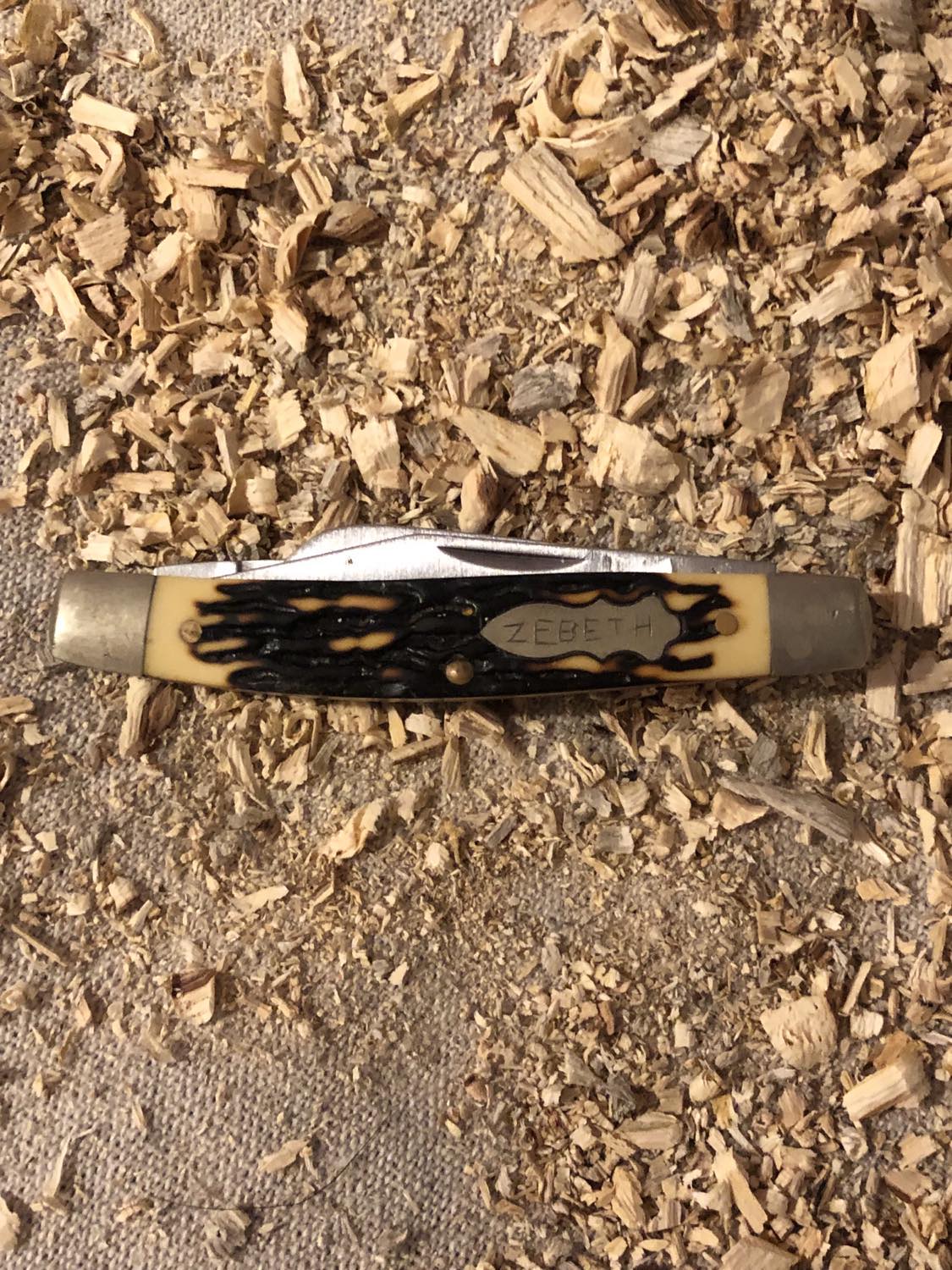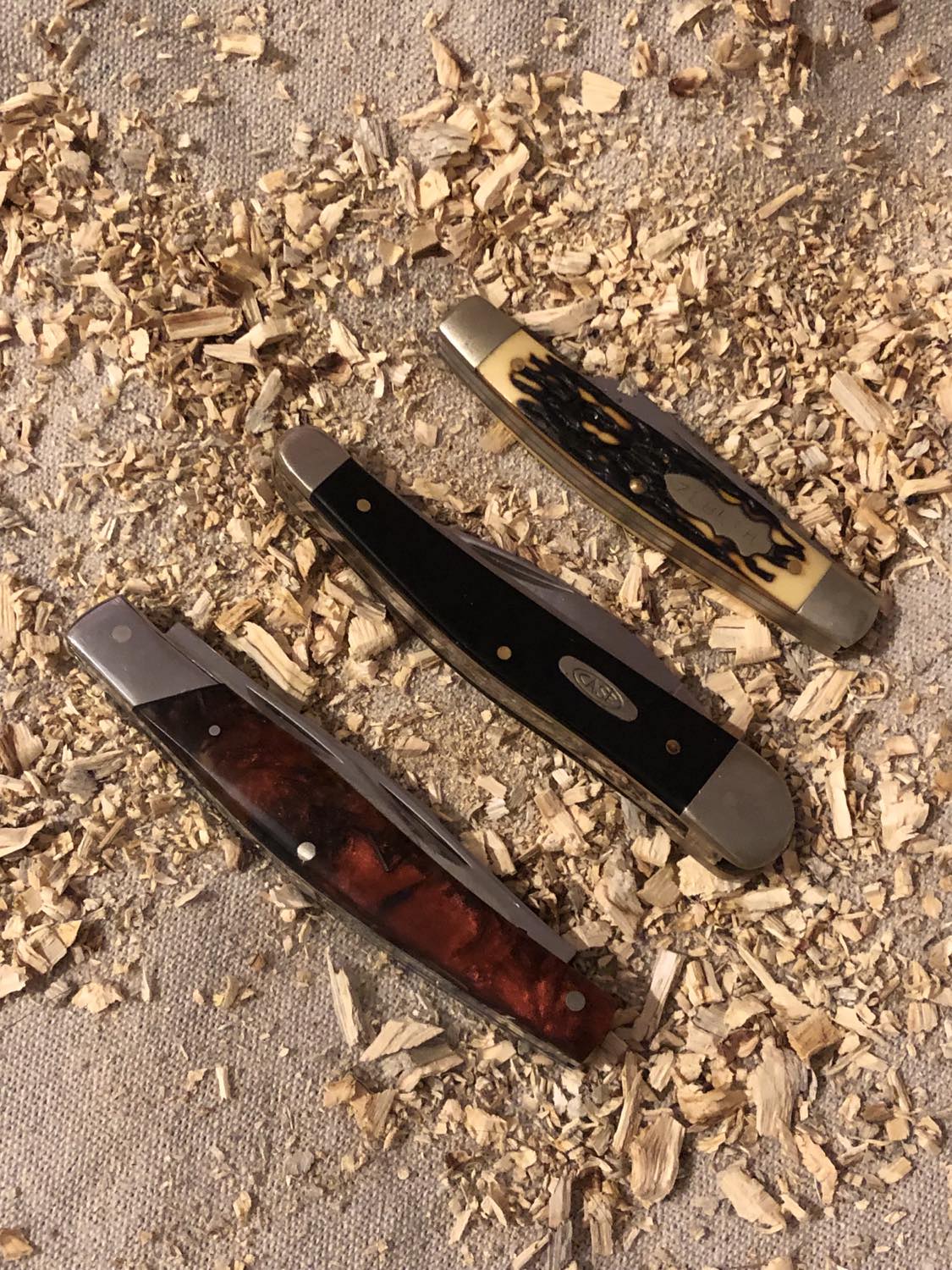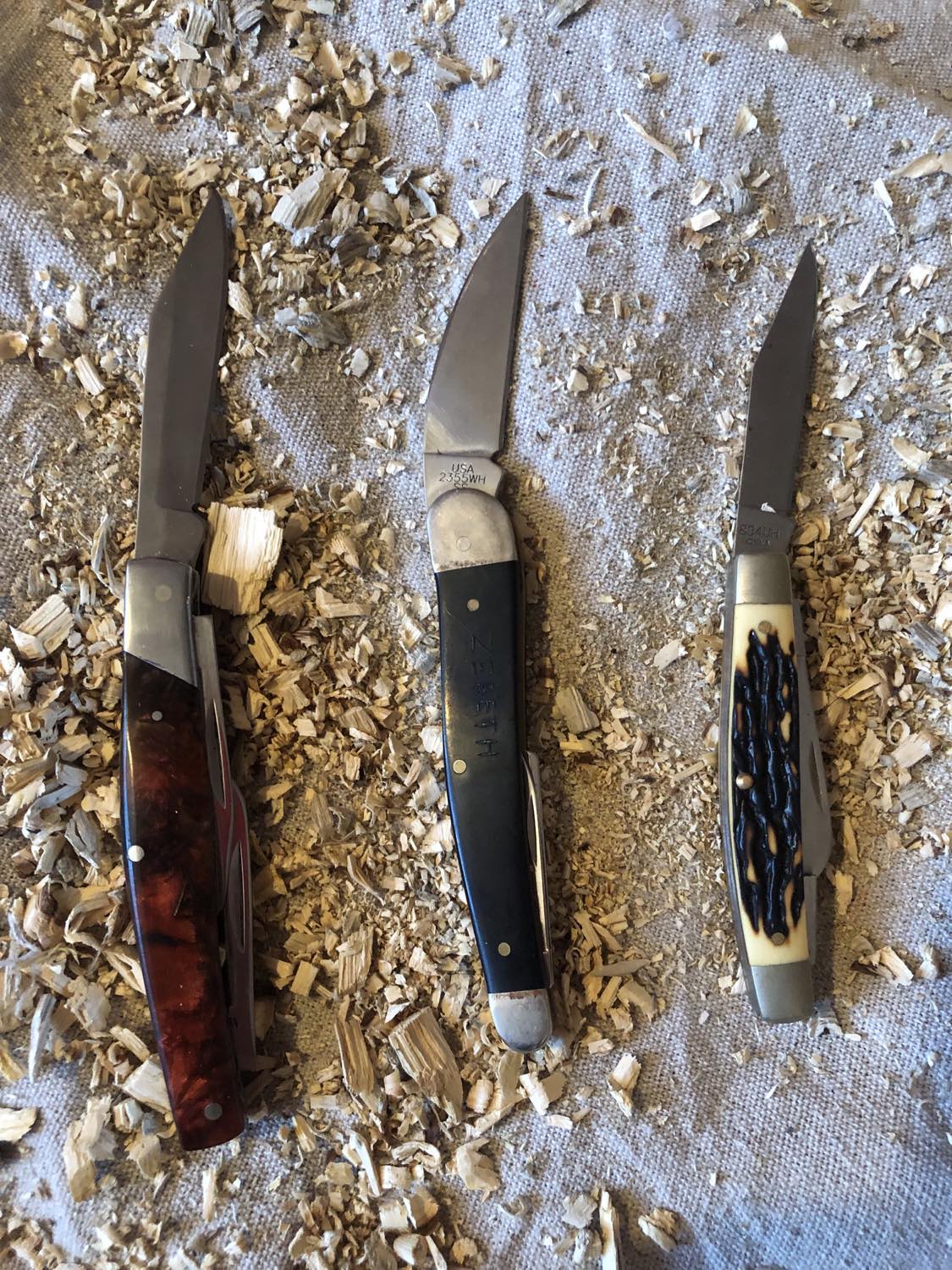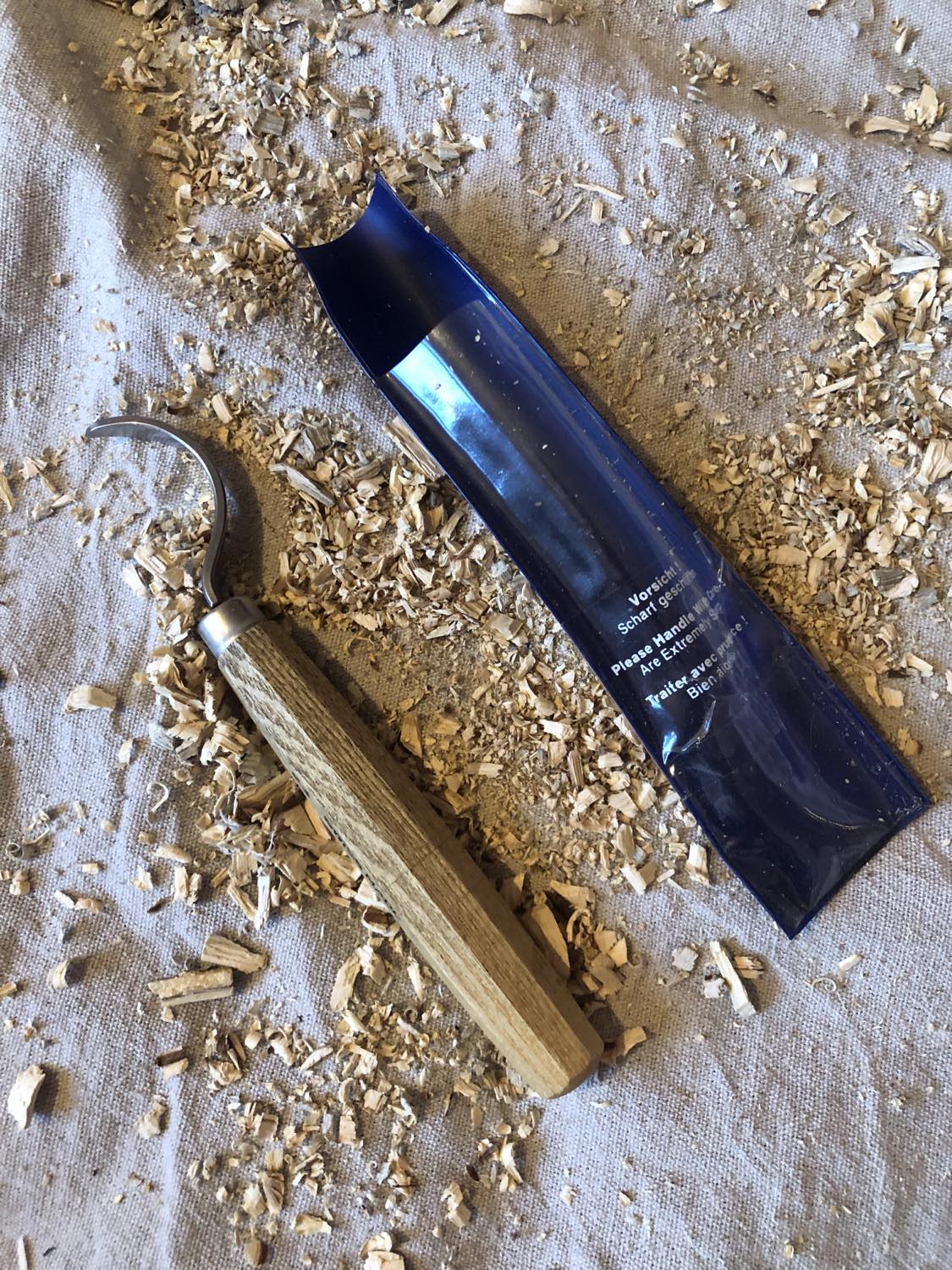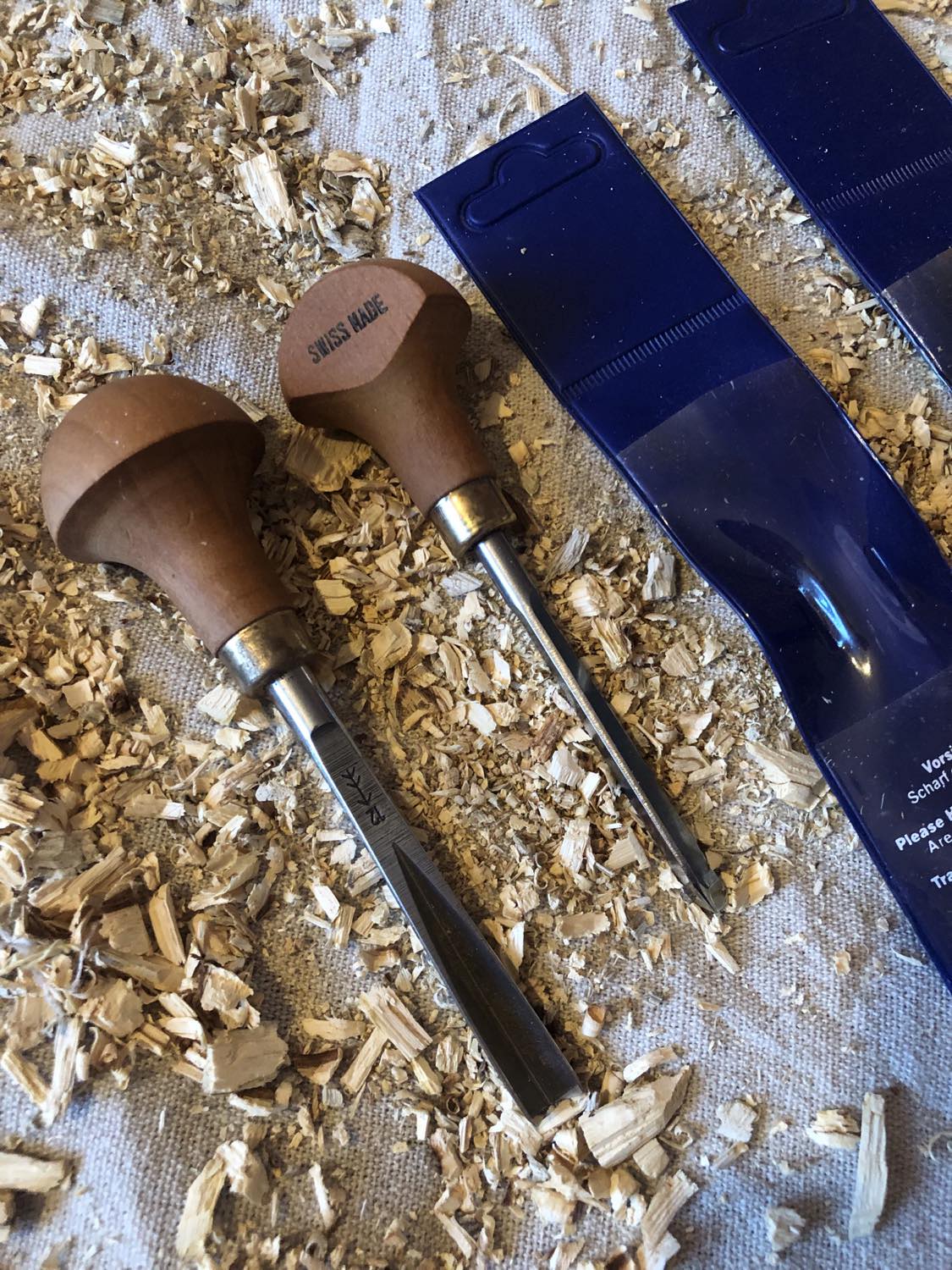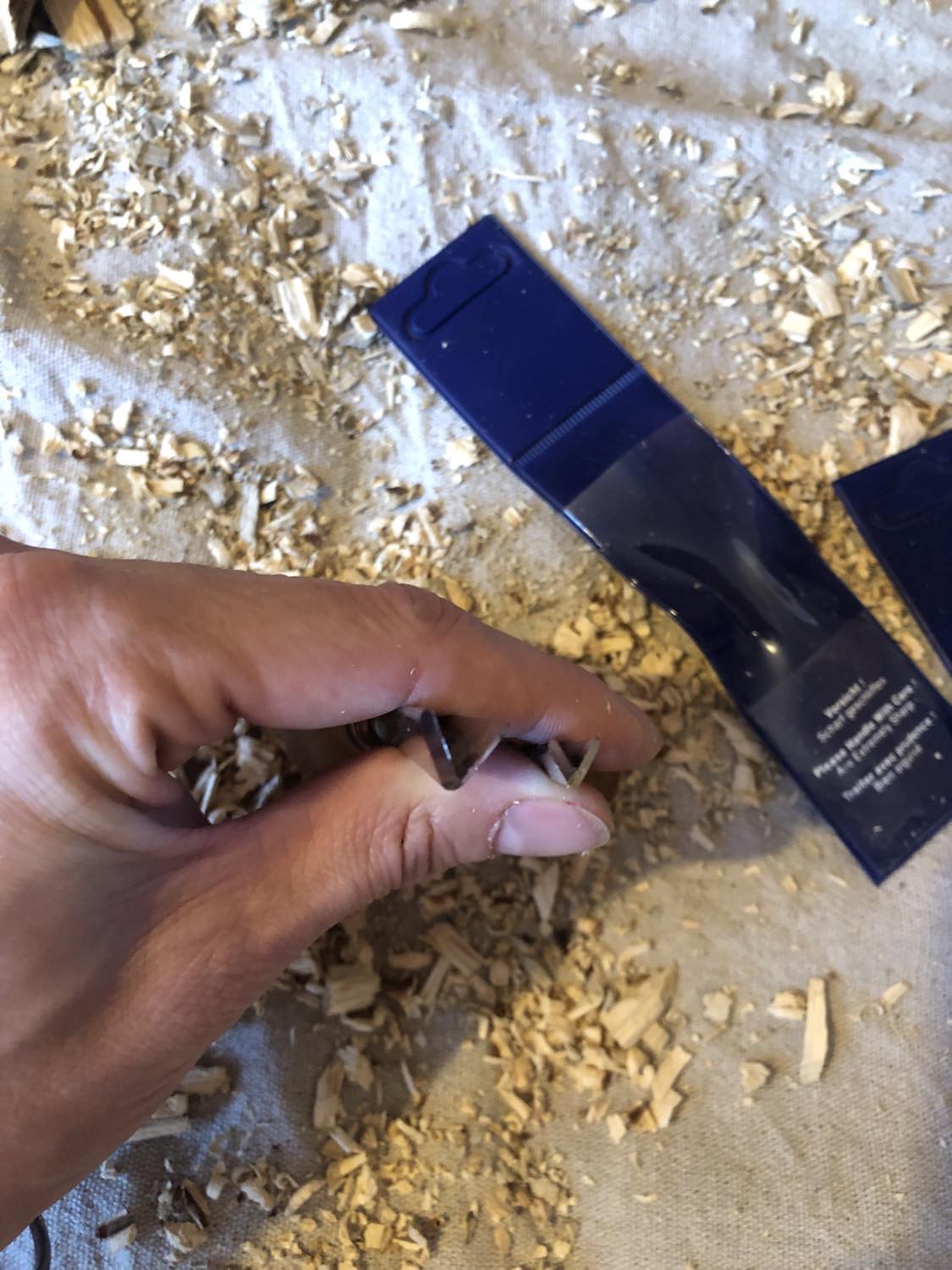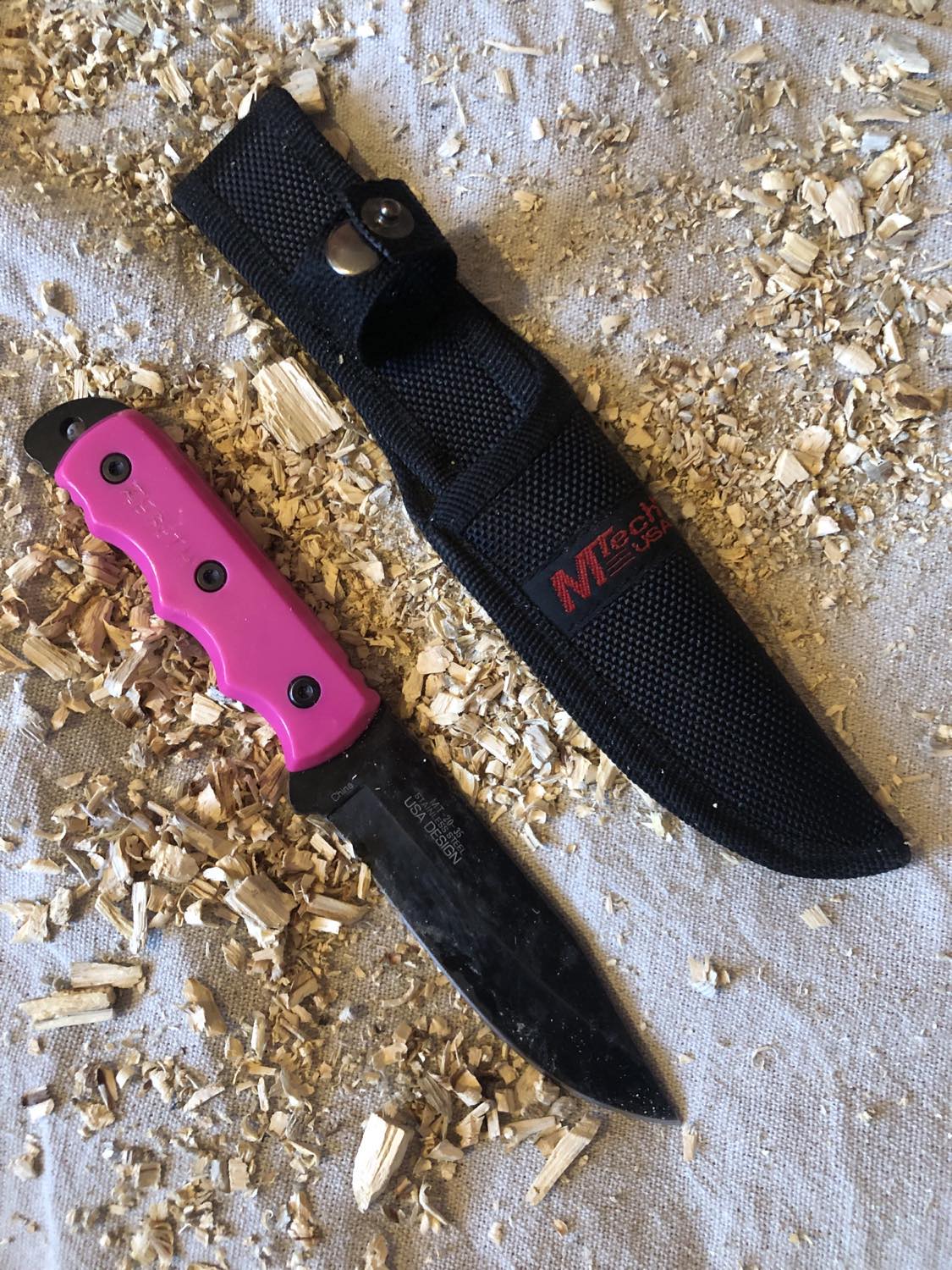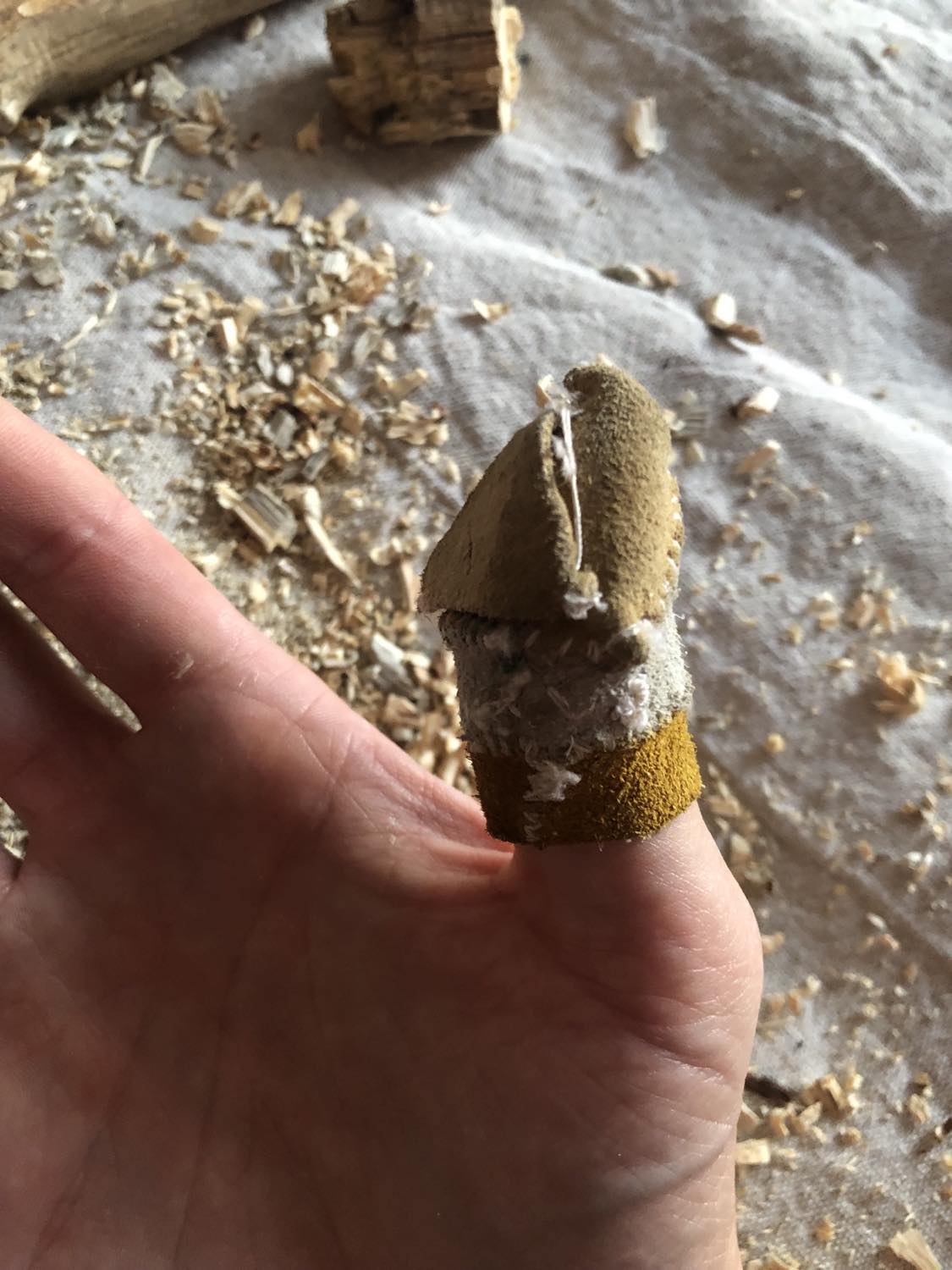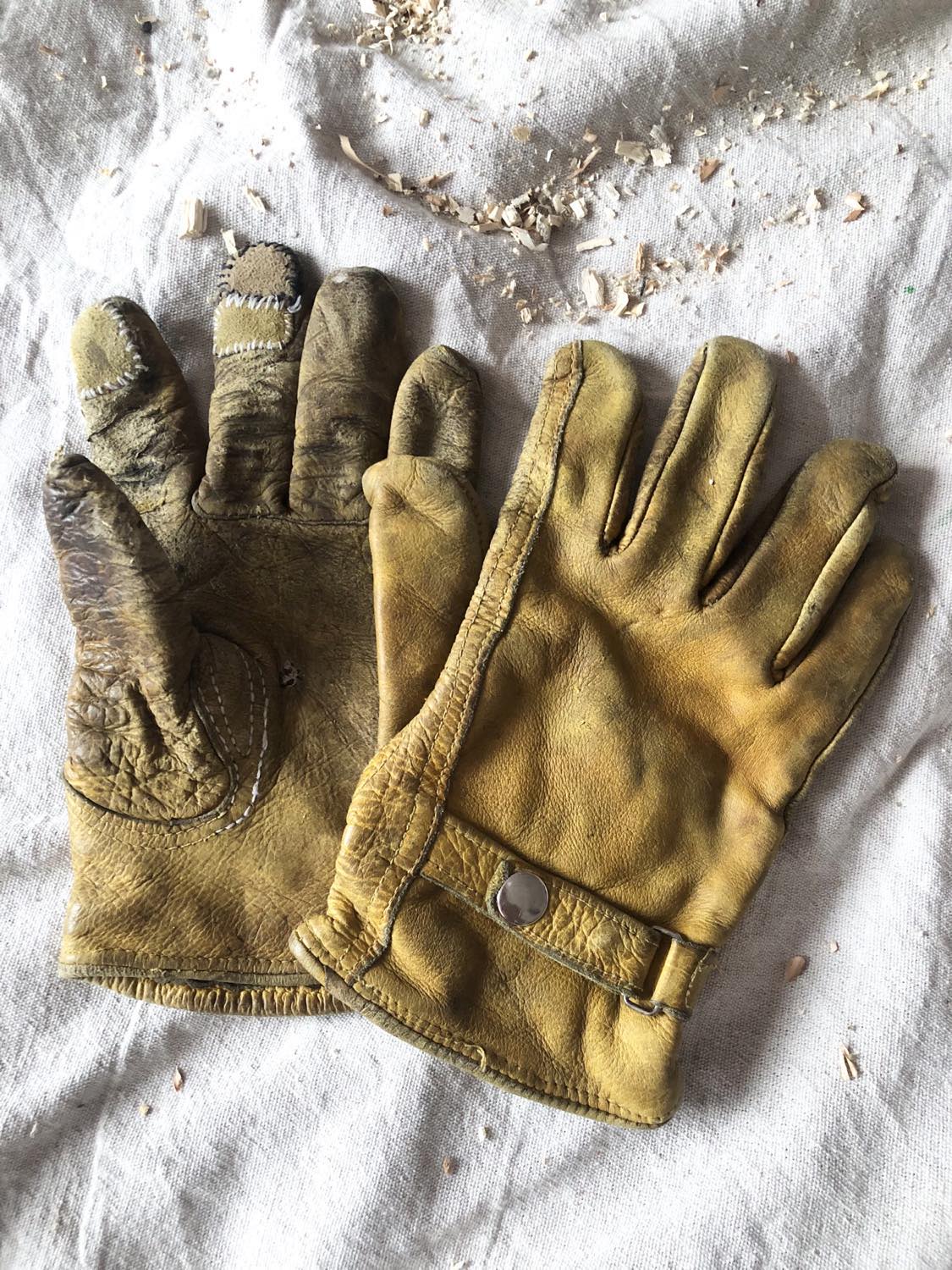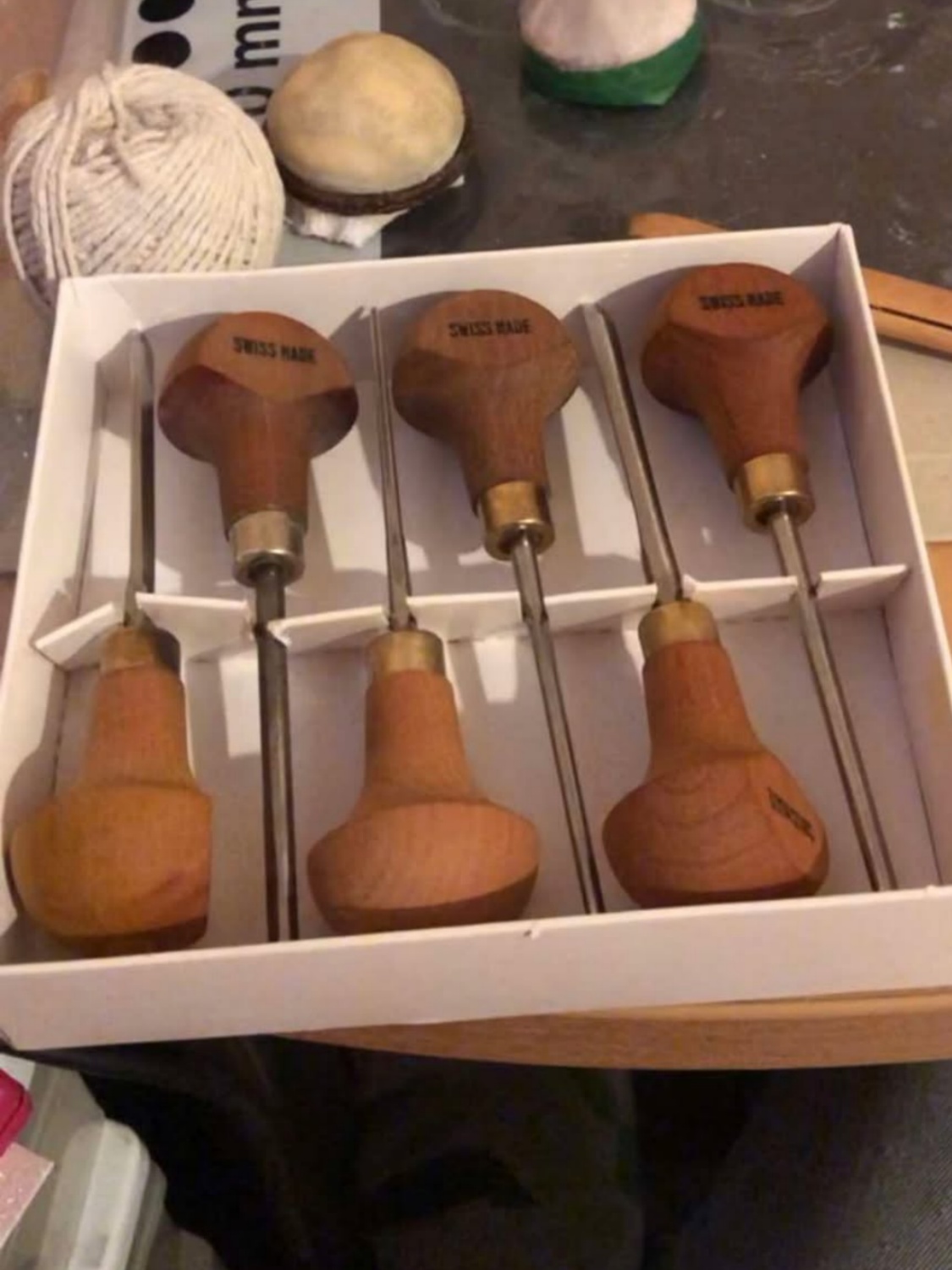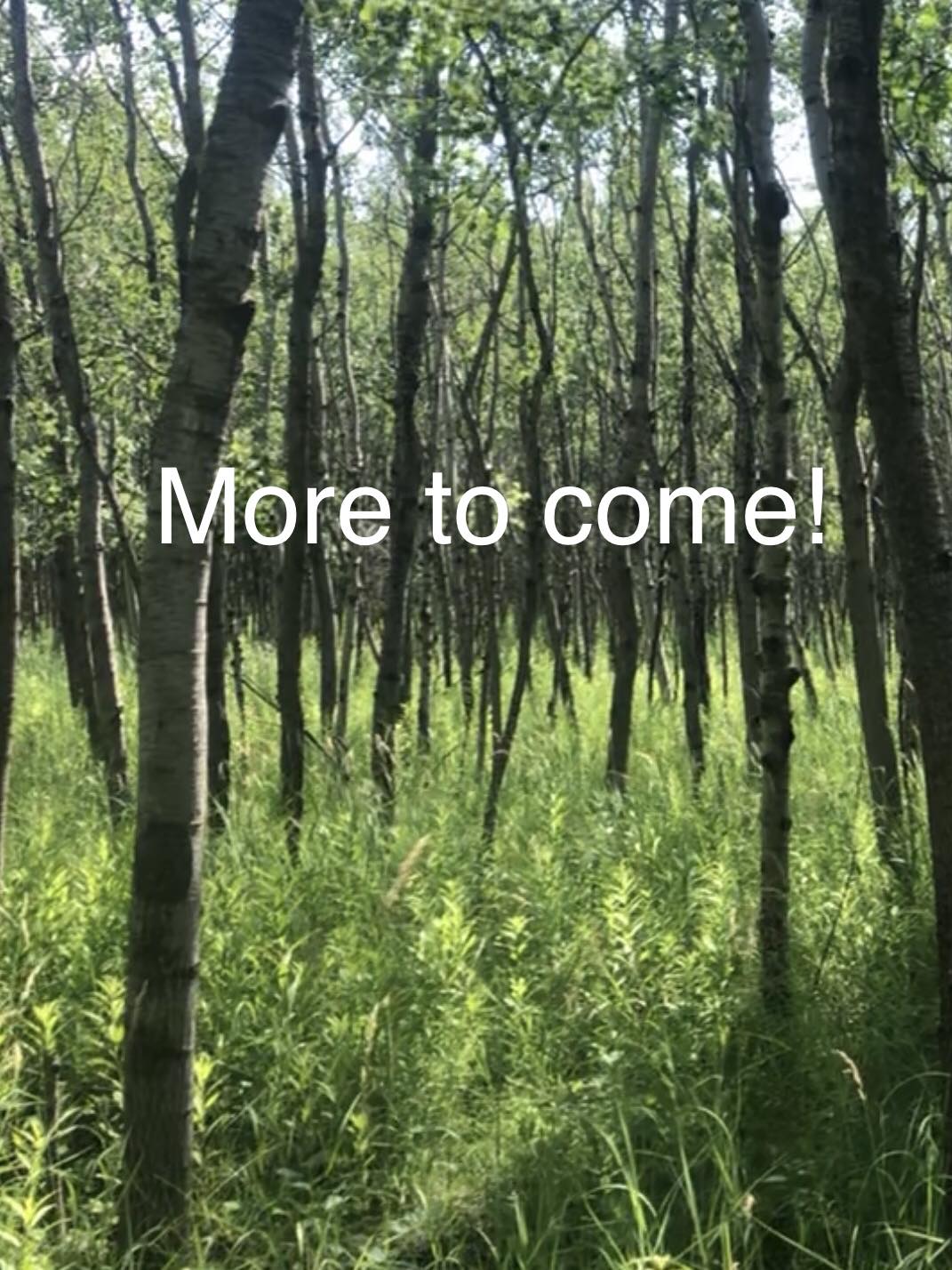So the second carving knife was the black one, which I got after that small blade broke off from the original. I hunted around for what was the highest rated three-blade whittling knife, and ordered this guy. I discovered that it has thinner blades, that almost seem to vibrate when you tap them on something their temper is so hard, and though they are *incredibly* sharp, I worried about breaking them just due to normal use, not even in trying to pop out a bit of wood. So I hunted for a replacement, something like my original buck knife, but thicker. And somehow, I stumbled across a shop on Etsy that had a modified (I'm not even sure what's modified about it) three blade carving knife for sale, and so I ordered it. And it is glorious. Now, each of these have their own uses, each blade being a different thickness, and slightly different edge angles, so they all carve a little bit different, and I swap between all three when I'm making something. Also around this time, I made my thumb guard which protects me while carving, as well as a pair of leather gloves, depending on the project.
At some point after that, I decided to pick up mainly a scorp, that weird, spoon-looking blade, because I *really* needed something like that when carving the Staff of Souls and Spirit Staff. This tool is normally used when carving spoons, but I was looking for something that would let me carve out nice smooth grooves from wood. And either shortly after or possibly at the same time, I picked up a few carving chisels, as I was beginning to carve staves more often, and was beginning to need to carve them when they were dry (my preference is carving the bark while they're still fresh).
Added bonus: Instructions on how to preserve a sapling and keep the bark from cracking as it dries out:
1. Cut sapling down from your property or where you're allowed to take one (always respectfully ask the forest if you're allowed to take it as well)
2. Take a pipe clamp, and tightly screw it down as hard as you can into the bark at either end of the sapling where you cut it. This means, cut it several inches too long on either side of the section that you want so that you can cut the clamp marks off.
3. Leave it for 3 days, and then tighten the pipe clamps down as hard as you can again.
4. Leave it for 1 more day, and then you can begin working on your staff. You can cut off the clamped bits, and the wood or bark will no longer crack as it is drying.
Advice I was given from an old carver who saw me walking with a hiking staff, and I have confirmed many times now that it works. He also gave advice that, since it was the (original) creature with three faces and two brains that he saw, that if you carve a staff out of dogwood with a top like that (I would suspect willow as well), if you soak the top in water, you can bend it open and pop a golf ball into there (or d20 dice!), and then let it shrink and dry back to normal, and then the golf ball/d20 will be trapped inside! So that's a pretty cool trick.
But anyways, back to carving tools! So we picked up a few carving chisels, one of which I actually broke because I was (I think I've learned at this point) trying to pry wood out too much with it (it was a really deep slot in my defense). Basically the same as the smaller v-chisel, but curved like a u. So when I replace that or pick up any other carving tools, I'll post them on this page as well. As of present, the rest of my carving knives have been filling my needs as is right now ^_^
Also I guess just to add, when I bought the chisels, I got that sharpening block as well, which has a leather flat on the back of it, that curved leather portion, and curved u and v strips that match the angles/shape of the Pfeil brand chisels that I purchased. Works quite well too! The yellow crayon-looking piece is meant to be rubbed on the wood or leather before sharpening the blade on it.
Documented here on May 4 2024 (and that pic of the six chisel set added January 2025 when I found it again after moving), and will safe to assume be added to.
